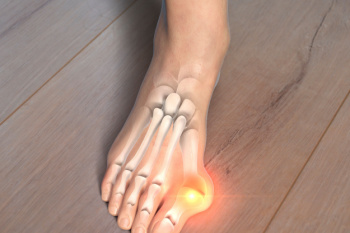
If you are struggling with daily pain from a bunion, you may wonder if having surgery is the right choice. A bunion is not just a bump on the side of the big toe. It develops when the joint at the base of the big toe shifts out of place as the tip pushes toward the other toes. This can lead to pressure, skin sores, and even affect the alignment of the second toe. Surgery is the only way to correct the position of the bones and relieve pressure caused by the bunion. A podiatrist may recommend one of several procedures, including cutting and repositioning the bones, or fusing parts of the foot to stabilize the joint. The main benefit of bunion surgery is long-term relief from pain and improved foot function. However, recovery can take weeks. Risks include swelling, stiffness, and rare complications like infection or nerve irritation. If you have a painful bunion, it is suggested that you schedule an appointment with a podiatrist to find out if surgery is the right option for you.
If you are suffering from bunion pain, contact one of our podiatrists of Metro Foot & Ankle. Our doctors can provide the care you need to keep you pain-free and on your feet.
What Is a Bunion?
Bunions are painful bony bumps that usually develop on the inside of the foot at the joint of the big toe. As the deformity increases over time, it may become painful to walk and wear shoes. Women are more likely to exacerbate existing bunions since they often wear tight, narrow shoes that shift their toes together. Bunion pain can be relieved by wearing wider shoes with enough room for the toes.
Causes
- Genetics – some people inherit feet that are more prone to bunion development
- Inflammatory Conditions - rheumatoid arthritis and polio may cause bunion development
Symptoms
- Redness and inflammation
- Pain and tenderness
- Callus or corns on the bump
- Restricted motion in the big toe
In order to diagnose your bunion, your podiatrist may ask about your medical history, symptoms, and general health. Your doctor might also order an x-ray to take a closer look at your feet. Nonsurgical treatment options include orthotics, padding, icing, changes in footwear, and medication. If nonsurgical treatments don’t alleviate your bunion pain, surgery may be necessary.
If you have any questions, please feel free to contact our office located in Tempe, AZ . We offer the newest diagnostic and treatment technologies for all your foot care needs.
